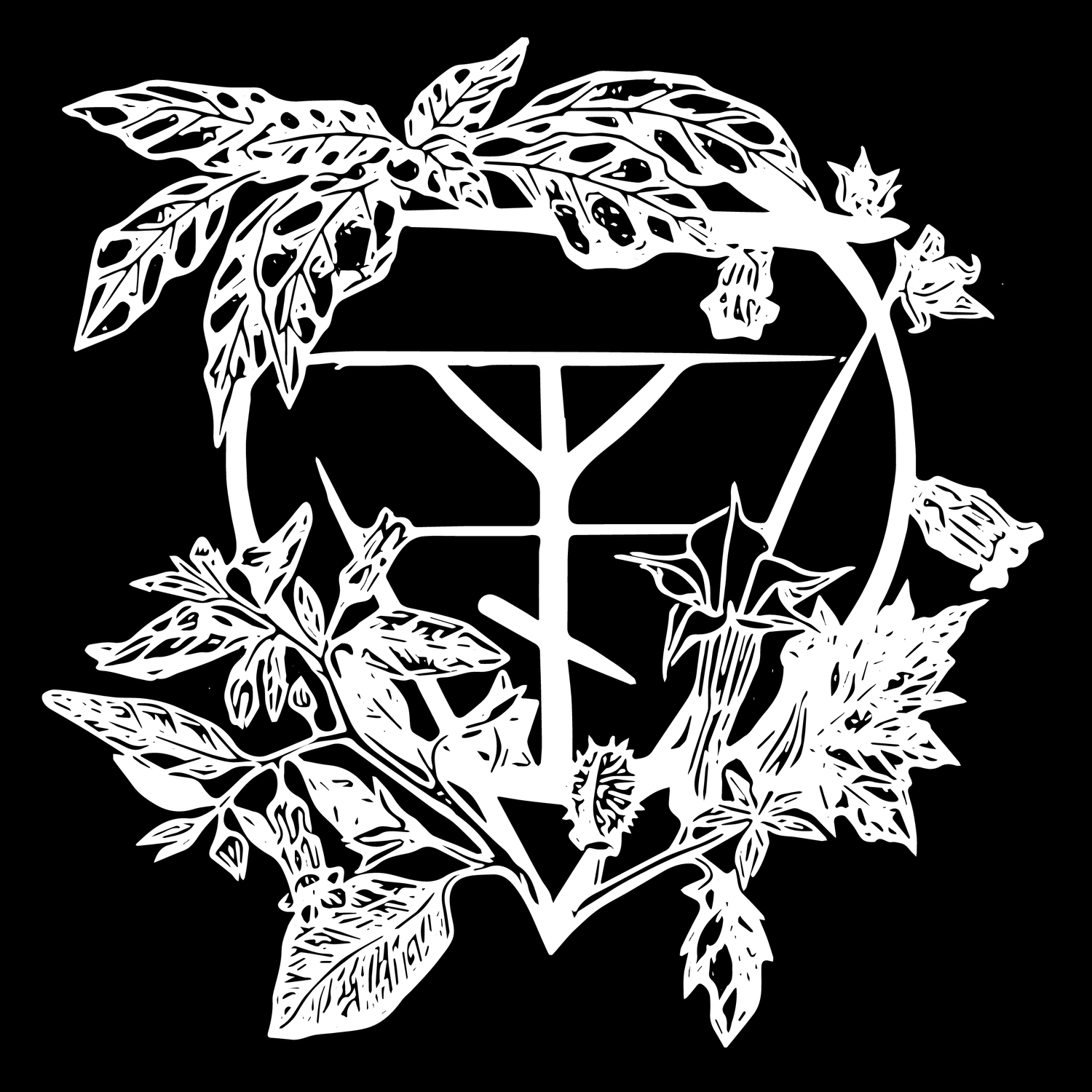Plant Profile: Black Henbane
1845 botanical illustration
Black Henbane
Hyoscyamus niger
Common names: apollinaris ( herb of Apollo), belinuntia (plant of Belenus), fetid nightshade, bilsenkraut, Jupiter’s bean, hog bean, poison tobacco, pythonion (dragon plant/plant of Pythia, the Delphic oracle)
Traditional Medicinal Use: henbane smoke was used to treat toothache and asthma. It was also used in the treatment of nervous disorders. It has sedative and narcotic qualities like the other nightshades. Henbane has been used extensively as an analgesic and antispasmodic, and is used to treat abdominal pain and other gastro-intestinal issues. Henbane plasters are applied for motion sickness. The plant has been used as an aphrodisiac and in brewing beer. (this information is for educational purposes only. Coby Michael/Poisoner’s Apothecary is not responsible for the misuse of this information)
Ethnobotanical Uses: typically henbane was burned as an incense or infused into alcohol for its intoxicating effects. The seeds were usually used in ritual fumigations, perhaps unknowingly for their more consistent alkaloid content. There is also mention of an Oleum Hyoscyamus made for medicinal uses. Henbane infused into beer or wine increases the intoxicating effects of the alcohol, and can also act as an aphrodisiac.
Alkaloids: The leaves and herbage contain .03-.28 tropane alkaloids over all, making henbane one of the safer nightshades to work with. The primary alkaloids are l-hyoscyamine (racemizes to atropine when dried or in alcohol) Aposcopolamine, cuscohygrine, tropine and other tropane alkaloids are also present. Henbane poisoning or overdose includes symptoms such as: dry mouth, farsightedness, delirium, respiratory paralysis, and coma. There have not been any deaths irrefutably linked to henbane. Henbane has the effect of causing arousal, excitement and intoxication.
Magical Uses: Henbane has been used to brew love potions. It was used by German witches in weather magic and was sacred to the thunderous sky gods. it was also commonly used in the ritual fumigations of ceremonial magicians. In the ancient world it was an herb used in divination. It was especially connected with necromancy, the dead and the underworld. Henbane can be burned to consecrate divinatory tools and to access visionary states. Henbane is a shamanic herb that assists in otherworld travel. It was also said that the smoke of henbane could make one invisible.
Plant spirit glyph for connecting with the spirit and virtues of Hyoscyamus niger
Historical Info: Henbane was used in brewing beer to increase its effectiveness. Tropane alkaloids enhance the effects of alcohol, and people used this to their advantage using it as a brewing herb, and infusing it into wine. This was outlawed in 1516 by the Bavarian Purity Law. While adding henbane to beer may not have been the most ethical business practice; it is evidence that henbane has been consumed in this was as was the custom for some time.
A classical incense recipe used in ceremonial magic utilizes henbane for the conjuration of spirits, necromancy and spirit manifestation.
1 part of each: fennel root/seeds, frankincense, coriander seed, cassia
4 parts: henbane (traditionally the crushed and powdered seeds would have been used)
Resources:
Ratsch, Christian. The Encyclopedia of Psychoactive Plants. Inner Traditions/Bear & Company. 2005. p 281
Lee, MR. Solanaceae III: Henbane, Hags and Hawley Harvey Crippen. University of Edinburgh. 2006.


